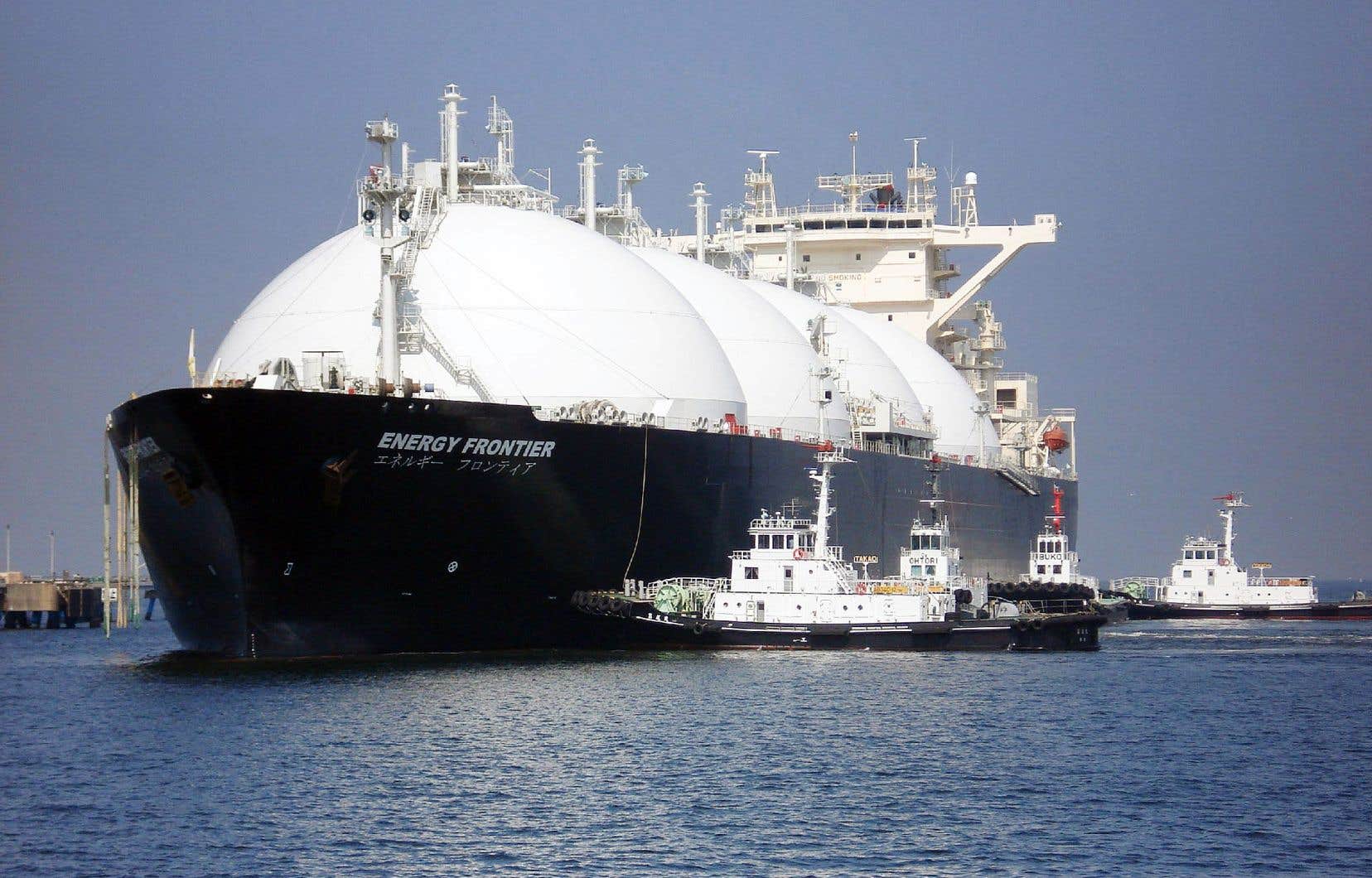A little over a year after the rejection of the LNG Quebec project by the Trudeau government, the American company behind the gas terminal has just filed a request for arbitration with the World Bank. She could claim billions of dollars in compensation. However, the federal government defends its decision by recalling that the project has been the subject of an environmental assessment.
The request for “arbitration” was filed on March 9 by Ruby River Capital, the American shareholder that controls Symbio Infrastructure, the entity behind GNL Québec and the Gazoduq project. These companies represent the three elements of the project, namely the gas pipeline, the liquefaction plant and the maritime terminal for the export of liquefied natural gas (LNG).
So far, little is known about the arbitration request filed at the World Bank’s International Center for Settlement of Investment Disputes (ICSID). The limited information available, however, indicates that it concerns the plant and the gas pipeline. It should be noted that the assessment of the 780 kilometer gas pipeline project is still “in progress”, according to what can be read on the website of the Impact Assessment Agency of Canada (AEIC). It was therefore not withdrawn by the promoter.
The case presented to ICSID refers to the provisions of the former North American Free Trade Agreement (NAFTA) and the Canada-United States-Mexico Agreement (CUSMA). These two agreements include provisions to protect investors, but we do not know for the moment what are the arguments raised in the request.
The duty therefore contacted GNL Québec to obtain documents or information concerning this request. “We will not comment on this,” the email simply replied.
Compensation?
It was therefore not possible to confirm whether Ruby River Capital is indeed claiming $20 billion from the Canadian government. This information was published on March 10 by Investment Arbitration Reporter, a specialist publication in the field. Including the gas pipeline project, the liquefaction plant and the marine export terminal that would have been built in Saguenay, the LNG Quebec project would have required investments estimated by the promoter at $14 billion.
It should be noted that Gazoduq and GNL Québec are still registered with the Registraire des entreprises du Québec. There are also active lobbying mandates in the federal registry of lobbyists and in the Quebec registry. In Quebec, the active mandate until 2024 mentions “steps taken to obtain all the permits required under the Environment Quality Act and other laws governing construction and construction activities. operation of a natural gas liquefaction complex.
Following a federal environmental assessment and a commission from the Bureau d’audiences publiques sur l’environnement, the two levels of government nevertheless closed the door to the project, designed to facilitate the export of natural gas exploited in the Western Canada.
The AEIC report concluded that GNL Québec would harm Canada’s climate efforts, and in particular the achievement of “carbon neutrality” by 2050. It also dismissed the argument that natural gas would be a partner in the ” energetic transition “. The passage of 320 LNG carriers each year on the Saguenay would also have represented a potential major risk for endangered marine mammals, including the St. Lawrence beluga, according to the AEIC.
“Scientific Data”
Called upon to react to the arbitration request filed with ICSID, the office of federal Minister of the Environment, Steven Guilbeault, defended the decision rendered in February 2022. “The Government of Canada makes its decisions based on scientific data available. The search for a balance between economic and environmental considerations and respect for the rights of indigenous peoples is also at the heart of the decision-making process. The Énergie Saguenay project has undergone a rigorous review which clearly demonstrates that the environmental impacts of the project outweigh any potential benefits. »
Lawyer at the Center québécois du droit de l’environnement, Marc Bishai recalls that Quebec and Canada “have exercised their legal powers to refuse this project”, at the end of an evaluation process “whose legality has never been contested by the promoter”.
“The numerous recourses by the hydrocarbon industry, both in the courts and in international arbitration, may constitute a desperate attempt to send a message to all governments. A message that it will not let it go and that it will not be easy to rid ourselves of our collective dependence on hydrocarbons, ”he adds.
Mr. Bishai also points out that this type of recourse has been the subject of criticism, “particularly because the processes can be rather opaque, the decisions rather unpredictable, and the impact rather worrying on public policy”. According to him, “such appeals can undermine the political will of States to adopt laws that rigorously protect the environment and public health. The replacement of NAFTA by CUSMA has also considerably reduced the possible recourses of private companies against Canada.
The end of LNG Quebec has not signed the end of new liquefied natural gas export projects in Canada. The LNG Canada project, supported by the Trudeau government, is the largest of its kind in the country. It is being built in British Columbia and will be supplied with gas from the controversial Coastal Gaslink pipeline.
Another project, Cedar LNG, is undergoing federal environmental assessment, as is the Ksi Lisims LNG project, also in British Columbia. This latest project provides for the annual production of 12 million tonnes of LNG, which is more than what GNL Québec forecast.
